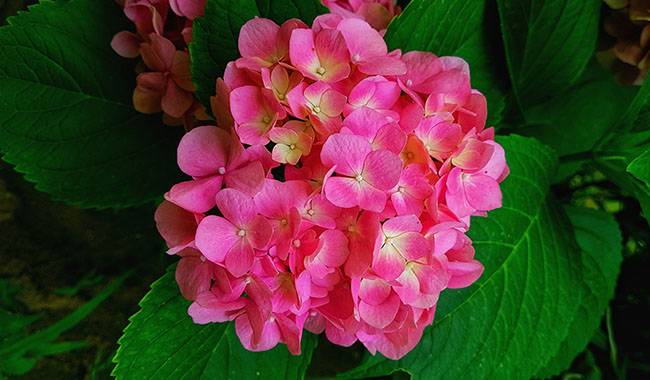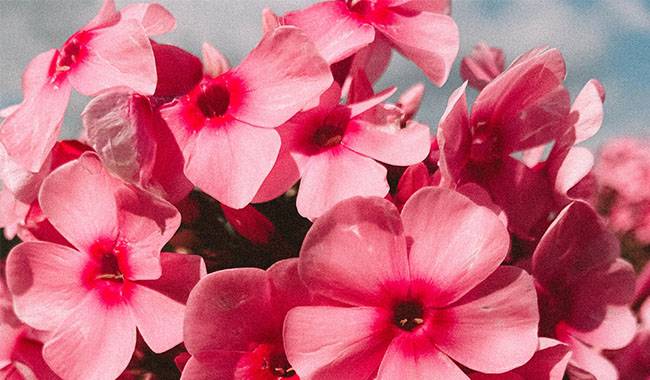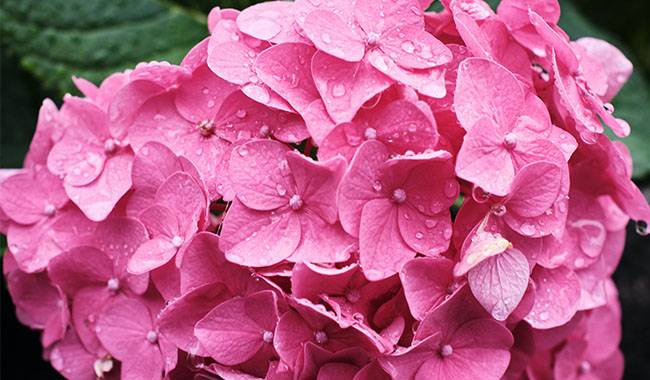
A summer window sill staple and a symbol of bright and colorful summer, Geranium is a true indoor and balcony classic. But it would be a big mistake to call Geranium a ready-to-bloom crop. Geranium doesn’t necessarily need cool temperatures to overwinter but is sensitive to light and pruning. Without primary care, it can be as disappointing as more capricious houseplants. Fortunately, the hardy and simple Geranium needs only basic treatment. If you don’t make any big mistakes, you’re sure to enjoy the fragrant umbrella-like inflorescences. You will learn How to Grow and Care Geranium Plant in the ThumbGarden article.
CONDITIONS FOR GROWING GERANIUM PLANTS

Creating problems and wrong conditions is much more difficult for Geranium than finding the right place for them. They are hardy and have minimum requirements that clearly “mark” acceptable limits. An indoor Geranium will be comfortable if provided with 5 main factors.
Good light
Despite growing and enjoying greenery in a secluded area, Geranium for flowering will prefer sunny or diffused light conditions, typical of window sills and balconies. Not only the timing of flowering but also the quality – size, number, and color intensity of flowers and inflorescences – depends on the intensity of light. Geranium does not like sudden changes in light levels, “welcomes” various compensatory measures on cloudy days, as well as extended flowering times in autumn and winter. Direct sunlight threatens decorative foliage only at midday.
Special overwintering regime
Despite popular claims, Geranium does not require a cool overwintering regime to bloom, although it is desirable for all indoor species, without exception. In winter, the most important thing for the plant is to change its watering regimen and stop fertilizing to give it a “breather” and prepare for the next bloom. Overwintering at 50-77 °F (10-15°C) will allow the shrub to retain its shape and flower more vigorously, but this is easily remedied by pruning and corrective care.
Access to fresh air
Geraniums are not useless on windowsills and balconies: they love fresh air and will enjoy the pleasure of ventilation. The showier the flowers and the more delicate the variety, the more sensitive the plant is to drafts, but no Geranium can grow without fresh air.
No extremes of overflow
Geraniums are not afraid of brief droughts and forgive mistakes but will not tolerate the extremes of overwatering. They will prefer the classic watering pattern, in which the top substrate dries out in spring and summer, and the soil dries out twice as much in winter, with minimal watering. Geraniums do not need increased humidity, and only in hot weather will they not refuse to be sprayed.
Fertilize only during flowering
Fertilization is also done only when the vegetation is active and flowering. Use a flowering plant fertilizer for this purpose. The fertilizer should be applied every two weeks at the dosage found on the product packaging.
Shaping to maintain shape
Geraniums need to be pruned even during the cooler overwintering period. They can be “pruned” in early spring (overwintering in warmer temperatures is also preferable) and in the fall immediately after flowering. Removing just the oldest shoots and shortening the rest is sufficient for a dense canopy and lush flowering. As the shoots grow, they need to be pruned to promote densification further. Pruning after the buds are set is one of the secrets to achieving beautiful, lush flowers.
Transplanting
All species of Geranium have similar requirements for conditions and care. But the large-flowered Geranium (the most capricious of the species), unlike its relatives, does not tolerate a reduction in light, it does not firmly tolerate drought, and does not easily forgive negligent care. But even it is not afraid of transplanting, since the substrate is filled with roots every year or every 2 years, transplanting is done. Transplanting requires highly drained and versatile soil. As long as it is nutritious, friable, and of neutral acidity. Curiously, the most common cause of Geranium not flowering is transplanting.
WRONG “FLOWER POTS” – LACK OF FLOWERING
The most common cause of lack of flowering in Geraniums was and still is “over” pot space. If plants are planted in large, spacious pots that greatly exceed the root ball, flowering will not begin until the entire container space is filled. The development of Geranium will only take place in the form of growing shoots and green leaves.
To grow Geranium in large containers, several shrubs need to be planted there in groups, reducing the space for each plant’s development to a standard. To avoid the problem of too much space, it is sufficient to transplant Geranium into pots that are only 1 inch (2.5 cm) larger than the previous ones. The opposite problem – not transplanting and filling the entire substrate with roots – also affects flowering but results in fewer cases of no flowering at all. However, the depletion and poor quality of the soil are difficult to compensate for, even with fertilizers.
LOTS OF WATER IN WINTER – LITTLE FLOWERING IN SUMMER
Reduced watering in winter is one of the two main conditions for Geranium to pass through its normal dormancy period. Even if the shrubs are allowed to overwinter in their normal habitat, they still need to cut watering in half on average by drying the substrate more thoroughly. You should not expect them to flower if watering remains constant. Geranium can tolerate drought, but not humidity. Root rot, constant waterlogging of the soil, and waterlogging of the tray and lower part of the substrate can affect the plant so much that you can forget about flowering.
THE SUBTLETIES OF FERTILIZATION
Geranium is often mistaken for overfeeding. The usual annual plant nutrition program for summer plants – weekly applications – is not a good idea. This plant needs standard fertilizer, and too many macro and micronutrients can interfere with its development.
Fertilizing indoor Geranium outside of the active asexual reproduction and flowering stages, feeding too much or too often, will only lead to explosive growth, deformation, and stability problems.
It is no coincidence that fertilizer selection reduces all options to a mixture of mainly potassium and phosphorus. Even the same percentage of nitrogen in fertilizer can lead to rampant green plant buildup, which is more than can be said for an overabundance of nitrogen. Using the wrong combination of fertilizers will often result in delayed or no flowering of domestic Geranium.
Ideally, the percentage of nitrogen should not exceed 11%. When choosing a fertilizer, pay attention to the rate of phosphorus, which is essential for the crop, and the trace element iodine.
OTHER CAUSES OF GERANIUM NOT FLOWERING

Other reasons that may cause Geranium to stop flowering on time include.
- Feeble light.
- Soil sludge is due to water with water that is not rainwater.
- Too much moisture in the air, soaking the leaves and buds.
- Constant turning and moving of plants during the germination stage.
- Lack of pruning (over-intensification) or over-pruning with too little branching (below the second or third eye).
- Natural aging (many varieties lose their decorative qualities after the third year)
- Severe pest infestation.
Even if Geranium is neglected, old, and does not bloom for a long time, it does not have to be “discarded.” The shrub can always be dug up or planted in the garden, giving time to recover. But it is easier to regenerate the species by cuttings.
From the latter part of the summer to the middle of autumn, the semi-woody shoots are cut, gently dried, and rooted in water or soil using standard methods. Of course, new shoots can also be grown from seed, but cuttings yield much faster results.







